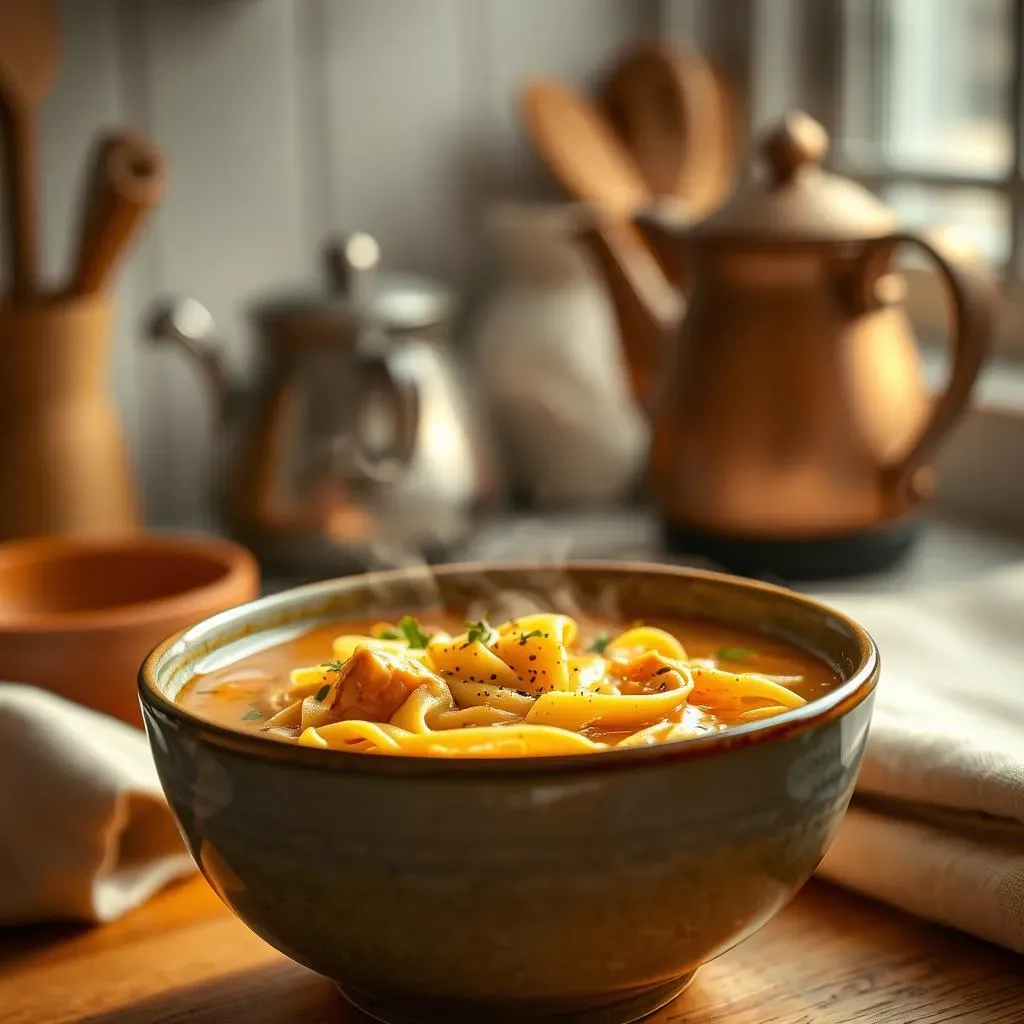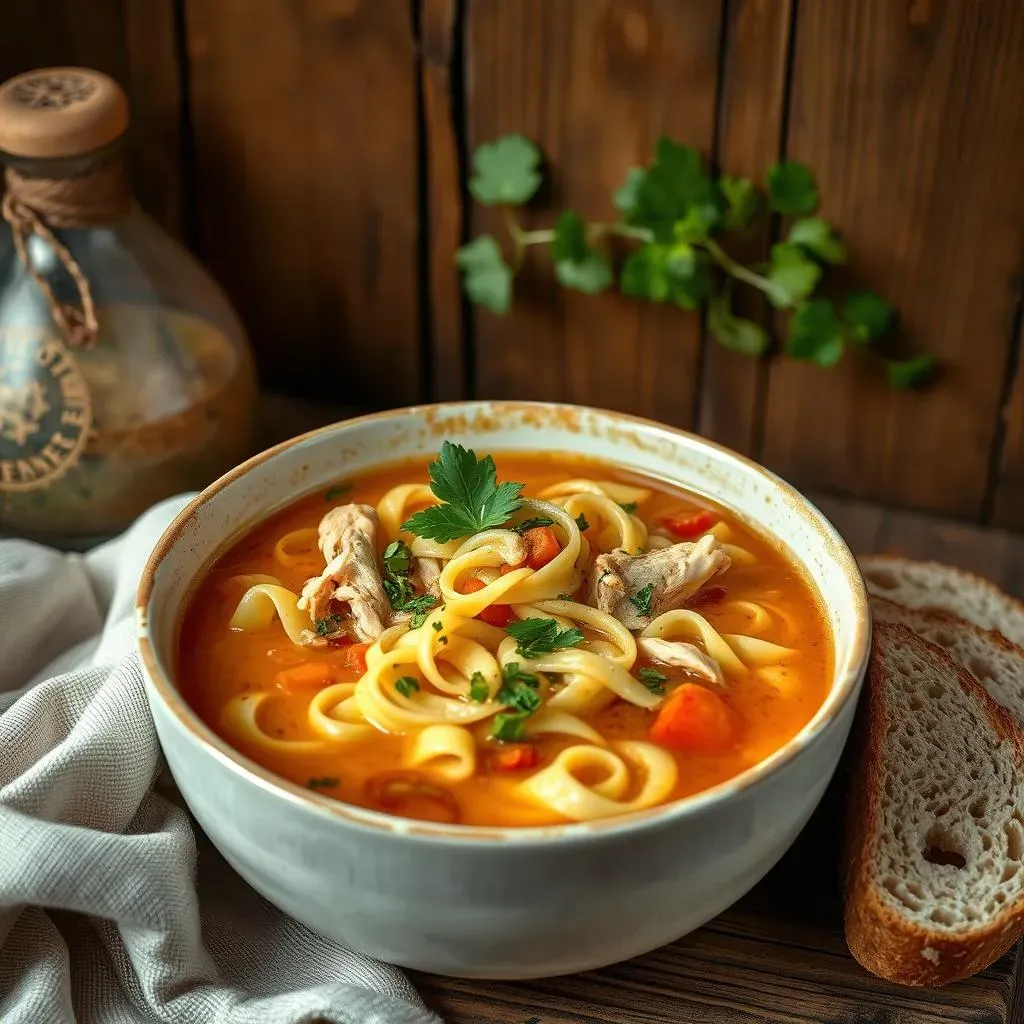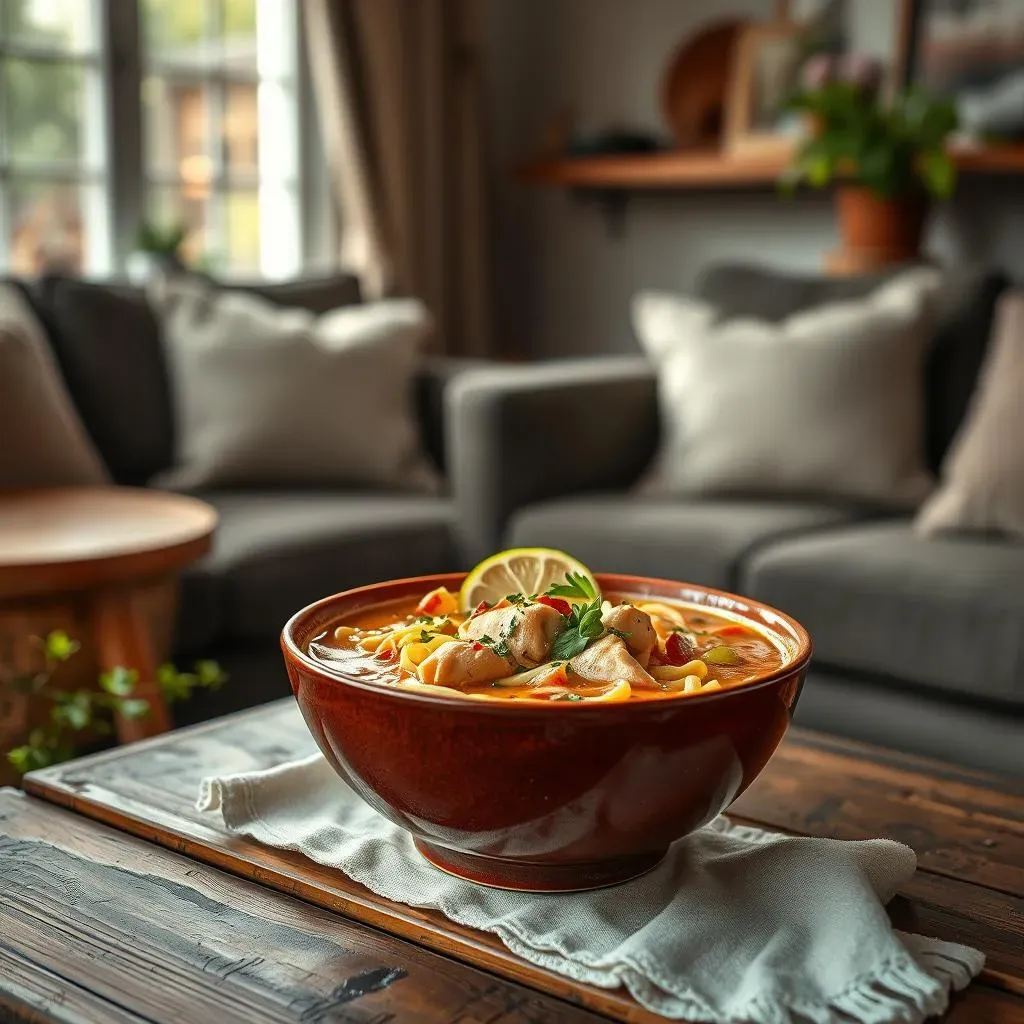Table of Contents
Ever felt under the weather and reached for a warm bowl of chicken noodle soup? It’s practically a universal comfort food, but have you ever stopped to think, "is chicken noodle soup good for hydration?" Beyond the soothing warmth and familiar flavors, there's a lot to unpack about this classic dish. We’re not just talking about grandma's remedy here; we're diving into the actual science behind whether that spoonful is actually helping you rehydrate. This article isn't about replacing your water bottle, but we will explore how chicken noodle soup can be a surprisingly effective way to boost your fluid intake, especially when you're feeling a bit run down. We'll break down the key ingredients, how they contribute to hydration, and give you some practical advice on how to make the most of your soup bowl. So, grab a spoon, and let's get into it!
Chicken Noodle Soup: More Than Just Comfort Food

Chicken Noodle Soup: More Than Just Comfort Food
Okay, so we all know chicken noodle soup is the go-to when you're feeling blah, right? It's like a warm hug in a bowl. But it's easy to dismiss it as just a "comfort food" and not much else. I think that's a mistake. Let's be honest, the name itself doesn't scream "hydration powerhouse," does it? But think about it, what’s actually in that bowl? Broth, chicken, noodles, veggies – it's more than just some bland mush. Each of those elements plays a role, not only in making you feel better but also in keeping you hydrated. This soup is a surprisingly complex combination of ingredients that can work together to give you a real boost when you need it. I think it's time we gave it some credit.
The Science of Hydration: How Soup Stacks Up

The Science of Hydration: How Soup Stacks Up
It's All About the Broth
Let's get real, the star of the show when it comes to hydration in chicken noodle soup is the broth. It's mostly water, and that's a good thing! Water is the basic foundation of hydration, and broth is just a tasty way to get more of it. But it's not just plain water, is it? It's usually got some salt in it, and that's not a bad thing either. A little sodium actually helps your body hold onto the water, so it doesn't just pass right through you. Think of it like this, plain water is like a quick pit stop, while broth is like a slightly longer rest stop that can help you stay hydrated for longer. Plus, the warmth is just comforting when you're not feeling great. But remember, not all broths are created equal, so keep an eye on the salt content.
Beyond the Liquid: The Supporting Cast
Okay, so the broth is the MVP, but the other ingredients play a supporting role in the hydration game. The chicken and veggies add some nutrients, and that's not nothing. When you're dehydrated, you often lose electrolytes, which are minerals that help your body function correctly. While chicken noodle soup isn't an electrolyte drink, it does have some sodium and potassium, which are two important ones. The noodles add a little bit of carbohydrates, which can give you a bit of energy. It's a gentle, easily digestible source of fuel that can help you get back on your feet. It's a team effort, not just a solo performance by the broth.
Component | Hydration Contribution | Additional Benefit |
|---|---|---|
Broth | Primary source of water, aids fluid intake | Contains sodium, helps with water retention |
Chicken | Minimal direct contribution | Provides protein and some electrolytes |
Vegetables | Minimal direct contribution | Source of vitamins and minerals |
Noodles | Minimal direct contribution | Provides carbohydrates for energy |
Is Chicken Noodle Soup Good for Hydration? Practical Tips

Is Chicken Noodle Soup Good for Hydration? Practical Tips
Homemade vs. Store-Bought: Making the Right Choice
Alright, so you're convinced chicken noodle soup has some hydrating superpowers, that’s great! But hold on, not all soups are created equal, especially when it comes to hydration. I'm a big fan of making it at home, because you can control exactly what goes in. You can use low-sodium broth, load up on veggies, and not be worried about any weird additives. Store-bought soups can be convenient, sure, but they often have a lot of salt, and that can actually have the opposite effect and dehydrate you. So, if you're going for hydration, try to make your own, or at least look for low-sodium options at the store. It’s worth the extra few minutes, trust me.
Boost Your Broth: Hydration Hacks
Okay, let’s say you're all in on the homemade soup thing, good for you! Now, here's where you can really boost the hydration factor. Think about adding extra veggies that have high water content, like celery or zucchini. They add more nutrients and more fluid. You can also try adding some herbs for flavor, which will make the soup more appealing to drink. And don’t be afraid to experiment with different types of broth. Bone broth, for example, has a ton of extra nutrients that can help you feel better. Remember, the goal is to make a soup that's not only hydrating but also tastes good, so you'll actually want to eat it. It’s all about finding the right balance.
Hydration Tip | Why It Works |
|---|---|
Make it at home | Control sodium levels and ingredients |
Use low-sodium broth | Avoid excessive salt, which can dehydrate |
Add water-rich vegetables | Boost fluid intake and nutrients |
Add herbs for flavor | Make the soup more appealing and enjoyable |
Experiment with bone broth | Increased nutrients that can aid recovery |
When to Reach for the Soup Bowl
So, when’s the best time to grab a bowl? I’d say chicken noodle soup is especially good when you're feeling under the weather, like when you have a cold or the flu. It's warm, soothing, and easy to digest when you're not feeling your best. It’s a lot easier to get down than a big glass of water when you’re nauseous. It's also a good option if you've been sweating a lot, like after a workout or if you've been out in the sun. While it's not going to replace water, it can be a good way to replenish some of the lost fluids. Just remember, it's a supplement to your daily water intake, not a replacement for it. And if you’re not feeling sick, you can still enjoy it, just be aware of the sodium levels if you’re having it regularly.
